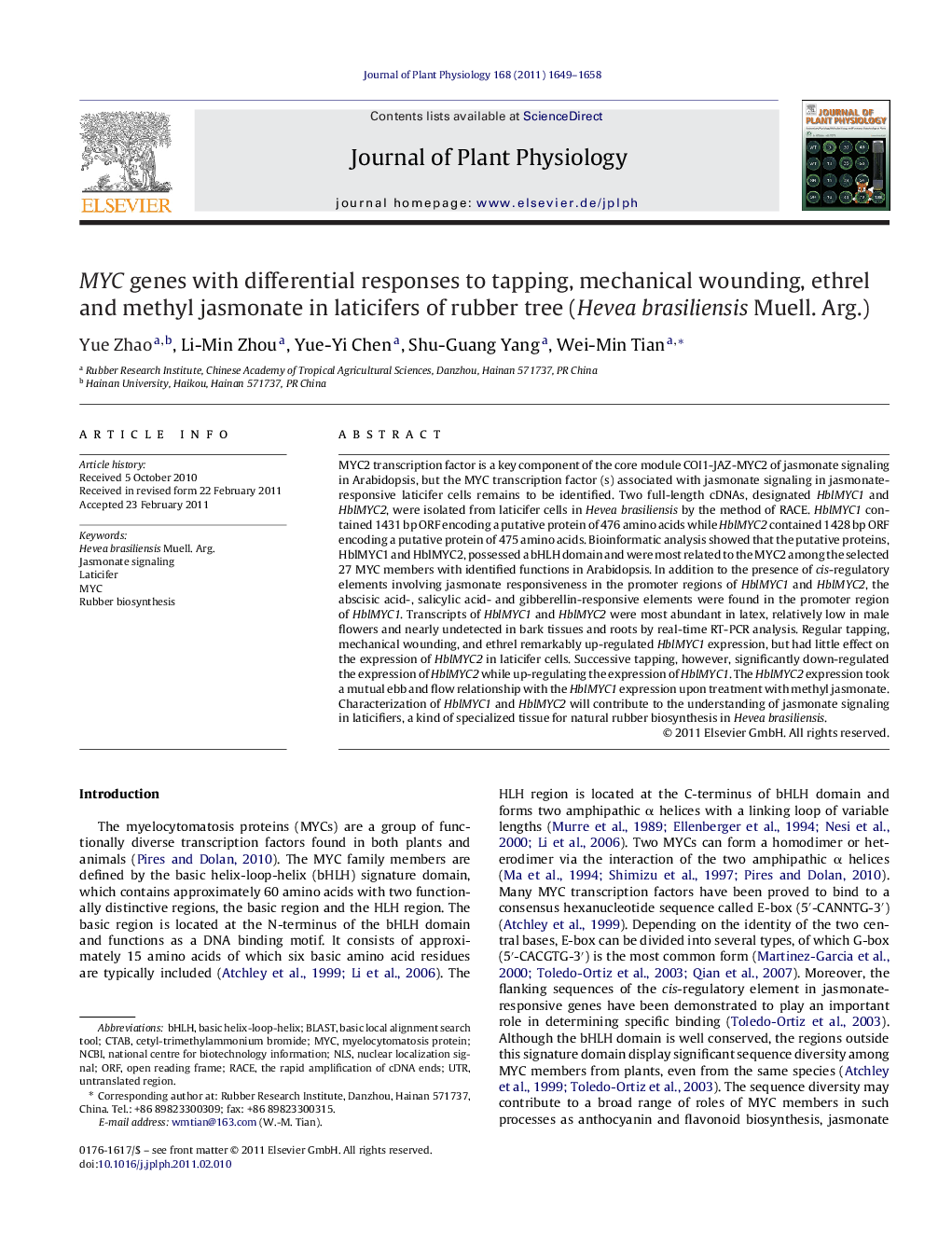| Article ID | Journal | Published Year | Pages | File Type |
|---|---|---|---|---|
| 2057614 | Journal of Plant Physiology | 2011 | 10 Pages |
MYC2 transcription factor is a key component of the core module COI1-JAZ-MYC2 of jasmonate signaling in Arabidopsis, but the MYC transcription factor (s) associated with jasmonate signaling in jasmonate-responsive laticifer cells remains to be identified. Two full-length cDNAs, designated HblMYC1 and HblMYC2, were isolated from laticifer cells in Hevea brasiliensis by the method of RACE. HblMYC1 contained 1431 bp ORF encoding a putative protein of 476 amino acids while HblMYC2 contained 1428 bp ORF encoding a putative protein of 475 amino acids. Bioinformatic analysis showed that the putative proteins, HblMYC1 and HblMYC2, possessed a bHLH domain and were most related to the MYC2 among the selected 27 MYC members with identified functions in Arabidopsis. In addition to the presence of cis-regulatory elements involving jasmonate responsiveness in the promoter regions of HblMYC1 and HblMYC2, the abscisic acid-, salicylic acid- and gibberellin-responsive elements were found in the promoter region of HblMYC1. Transcripts of HblMYC1 and HblMYC2 were most abundant in latex, relatively low in male flowers and nearly undetected in bark tissues and roots by real-time RT-PCR analysis. Regular tapping, mechanical wounding, and ethrel remarkably up-regulated HblMYC1 expression, but had little effect on the expression of HblMYC2 in laticifer cells. Successive tapping, however, significantly down-regulated the expression of HblMYC2 while up-regulating the expression of HblMYC1. The HblMYC2 expression took a mutual ebb and flow relationship with the HblMYC1 expression upon treatment with methyl jasmonate. Characterization of HblMYC1 and HblMYC2 will contribute to the understanding of jasmonate signaling in laticifiers, a kind of specialized tissue for natural rubber biosynthesis in Hevea brasiliensis.
